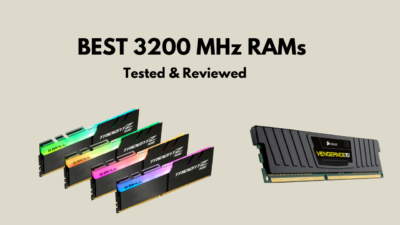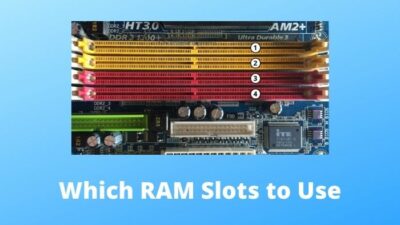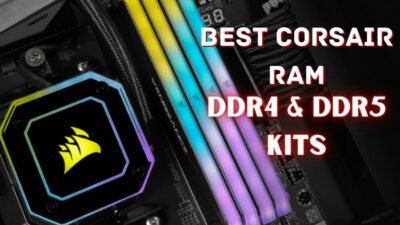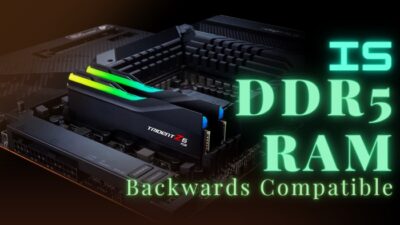As a gamer & tech-enthusiast, I always strive for high computer speed, fast and smooth work, and gaming experience and wonder how the components work and why these are called by the terms they are known as, which is pretty interesting.
Another interesting fact is RAM, a.k.a. Random Access Memory, is also called temporary. Wondering why?
It intrigued me too when I heard it for the first time too. But I had to go through different sites, portals, blogs & tutorials to find out.
But you won’t be needing that. This guide will be easier and more convenient for you to know.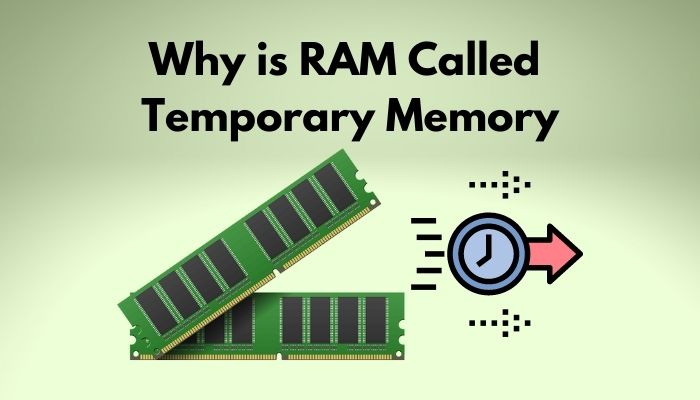
Don’t forget to check out some of the best 4800 MHz RAMs for a faster gaming experience.
Storage Types in Computers
Computers process information stored in their memory containing data storage units.
Computers have two types of Storage – Permanent & Temporary.
Permanent storage is provided by the computer’s hard drive or solid-state drive. Meanwhile, the temporary storage is provided by memory modules or RAM (Random Access Memory)
Permanent Storage
Permanent storage is any computer data storage device that retains its data even after being separated from its power source.
In comparison with temporary storage, permanent storage operates more slowly. Its first and foremost task is to store long-term data such as your applications, documents & OS (Operating System). When any specific application is opened, that data is loaded into the temporary storage, where it operates much faster.
Temporary Storage
In comparison to permanent storage, non-permanent/temporary storage is also known as volatile memory. Volatile memory is a storage device whose data is lost when its power source is disconnected. Examples are RAM and CPU Cache.
For detailed information, check out our article explaining why RAM is called temporary memory.
What is RAM?
Think of RAM as a short-term memory for your CPU to work with. Anything that needs to be accessed quickly and frequently can be stored here to speed up a multitude of processes. RAM is ideally used to act as a temporary storage device for the computer’s operating system and applications.
What matters most is the read/write speed and the cost of the RAM. There are only two types of RAM: SRAM (Static RAM) & DRAM (Dynamic RAM).
Go through our separate article on DRAM frequency to know about what it is and how to set it up.
SRAM cost’s more than DRAM because DRAM stores information in capacitors, and SRAM uses flip-flop circuits to store data.
Flip-flop circuit stores single bits of data that represent binary 0 or 1 & is more expensive than capacitors due to complex circuitry, but it is also faster.
What Does DDR Mean?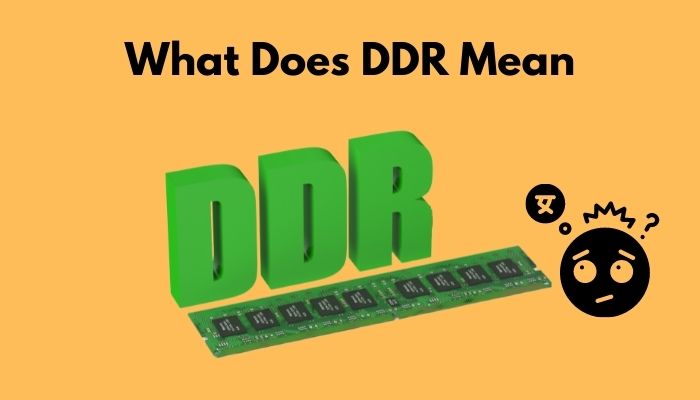
Although it sounds very cool and technical, what does DDR stand for? DDR stands for “double data rate,” meaning that there are two data transfers for every clock cycle.
DDR4 RAM is the 4th iteration of DDR RAM before it came DDR3, DDR2, and of course, DDR1. They have different technology in each one that makes them better than the last, but none of them are compatible with each other.
If you want to use DDR4 RAM, it has to be with other parts that support it. Things like the motherboard and CPU exclusively support one type of RAM at the moment, which is DDR4.
Here’s a list of the best DDR4 RAMs you can buy right now!
How does Permanent and Temporary memory work?
Permanent and Temporary storage devices complement each other. They work well with each other because each does a part significantly, which the other device can’t.
Permanent Storage Device operates slowly in comparison to non-permanent storage. It is cheaper to produce in terms of production. The primary use of permanent storage is long-term data storage for documents, audio, video, operating system files, applications, etc.
Volatile memory or temporary memory operates faster than permanent storage as it’s data is accessed at lower latency. In comparison with permanent storage, it’s much more expensive to produce. The computer uses RAM as a scarce resource for the most time-critical applications.
A computer usually holds CPU cache, RAM, and HDD/SSD as storage devices.
The larger the capacity, the slower it is. A computer can have 2TB of HDD or 512GB of SSD for permanent backup. The same setup may use 8/16/32GB of RAM and 6/9MB CPU Cache as volatile memory.
The slowest cheapest storage holds the most significant capacity & the fastest, more expensive storage is the smallest in capacity.
What happens when you have a lower RAM capacity?
When you don’t have enough RAM on your system, your computer will start to pull things on and off from your HDD or Hard drive, making these tasks consume more time, and your experience with your computer speed will feel very laggy.
With the upgradation of the new generation of hardware and game development technologies, a lot of current applications and games require more memory to run things smoothly. So a RAM upgrade will solve the shortage of volatile memory, and more RAM will increase the computer speed.
The more memory a computer holds, the more it can think simultaneously. High capacity enables you to use more complex programs.
Motherboard and RAM Compatibility
As much as the CPU holds an impact on RAM optimization and usage, your motherboard should also be able to support the ram you will attach it with. Motherboards determine RAM capacity as motherboards have a limited number of dual in-line memory (DIMM) slots which is where the memory sticks are attached to.
AS DDR factors categorize computer RAM modules, motherboards support only one, which basically depends on how old your motherboard is. Most common are DDR4 SDRAM & DDR3 SDRAM. DDR4 is the current generation of RAM found in systems from 2015 and later on. Any previous iterations of DDR are from before 2015.
Take Away
As mentioned earlier, when you turn off your computer, the data in your RAM is gone. When you close an application and start another one, the data from that closed app is gone from the RAM too. So, it’s called temporary.
The data in your hard drive remains intact no matter what apps you start or how many times you shut down your computer, unlike the RAM.

